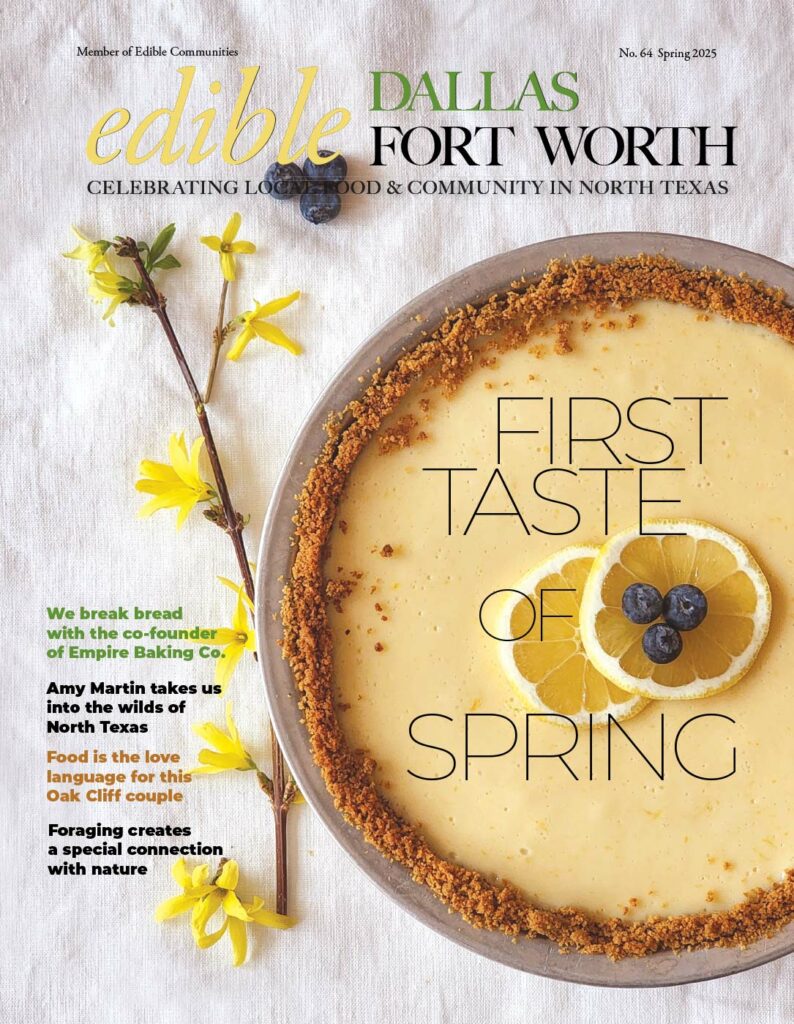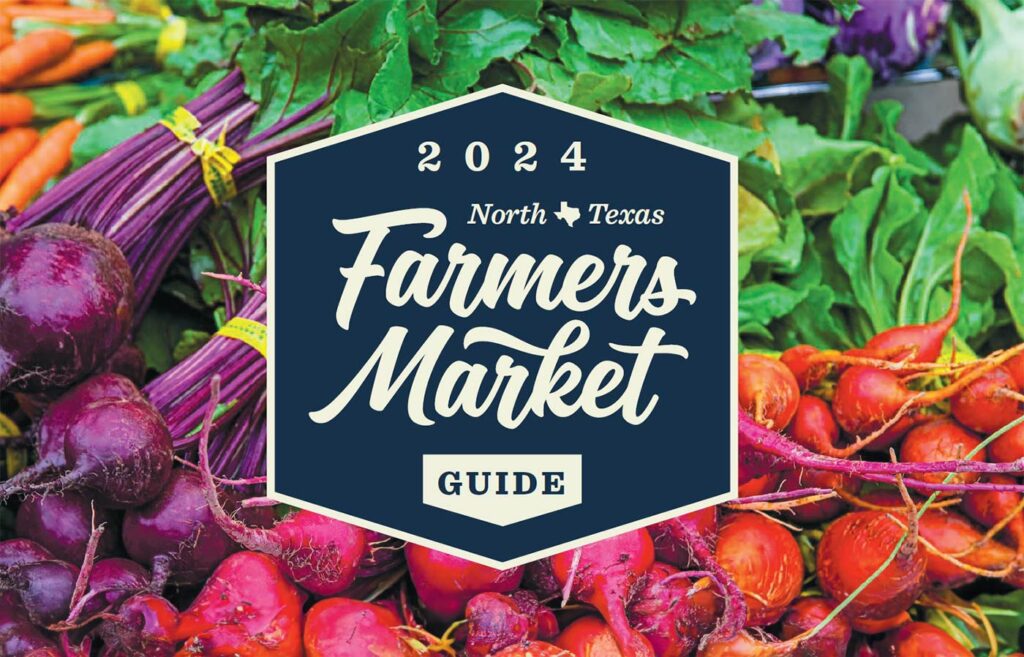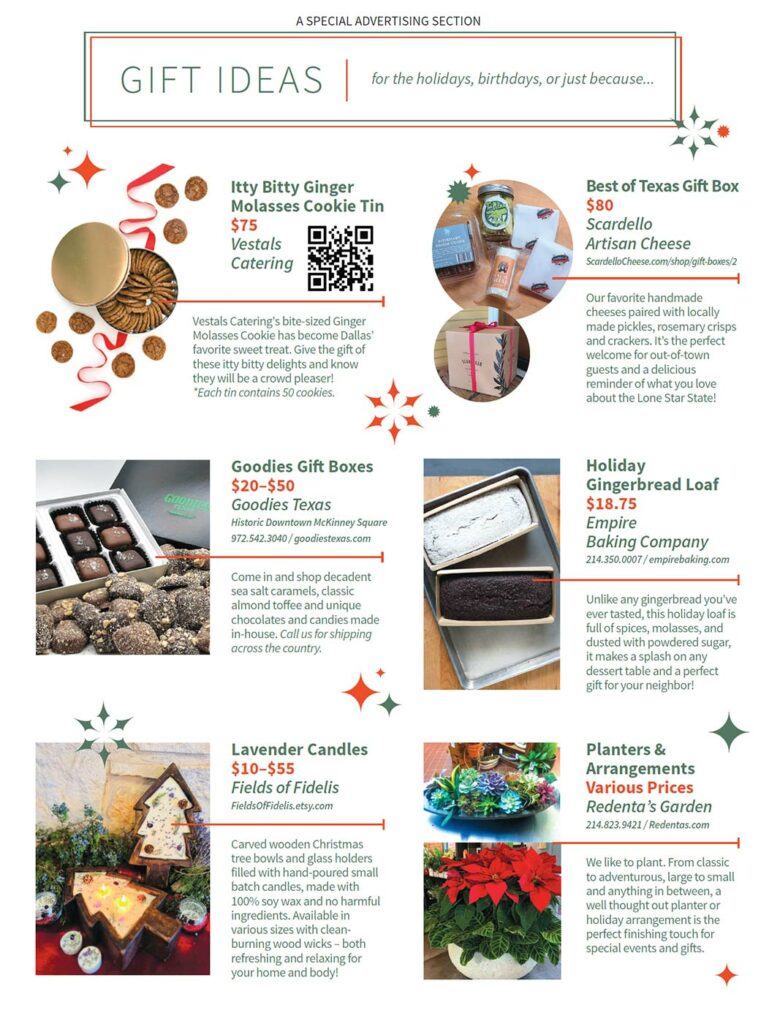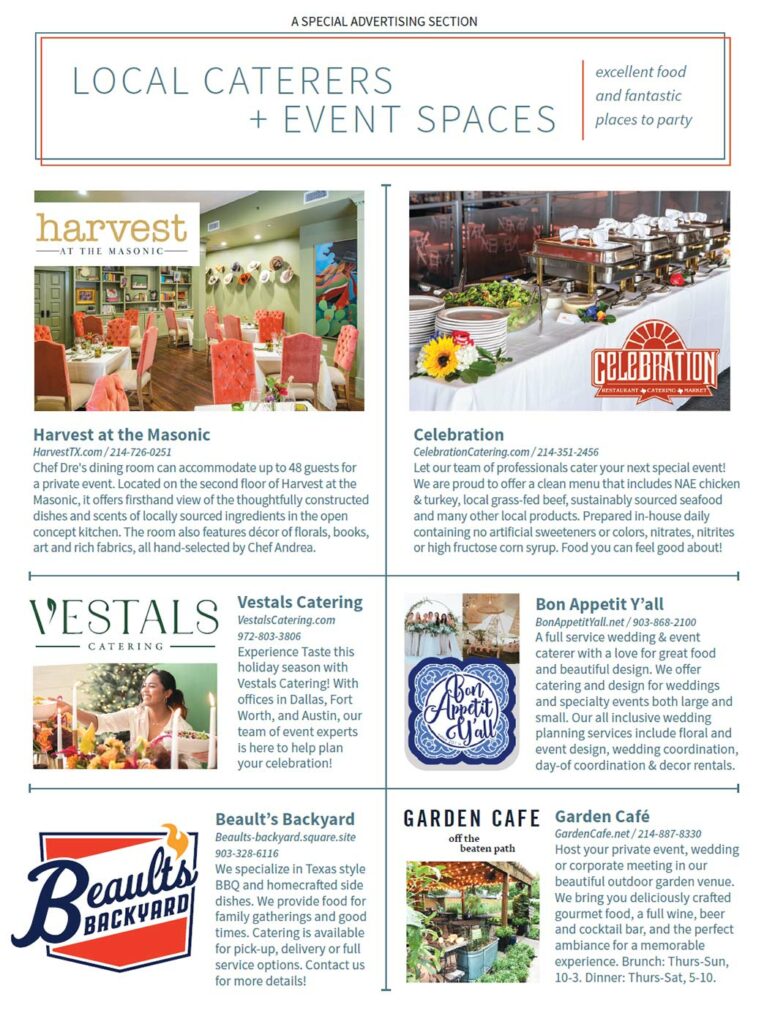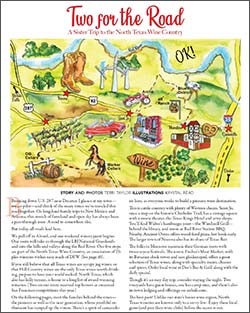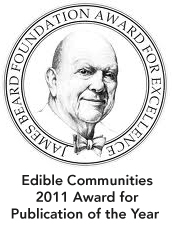Photography: Daniel Cunningham and Roseann Ferguson
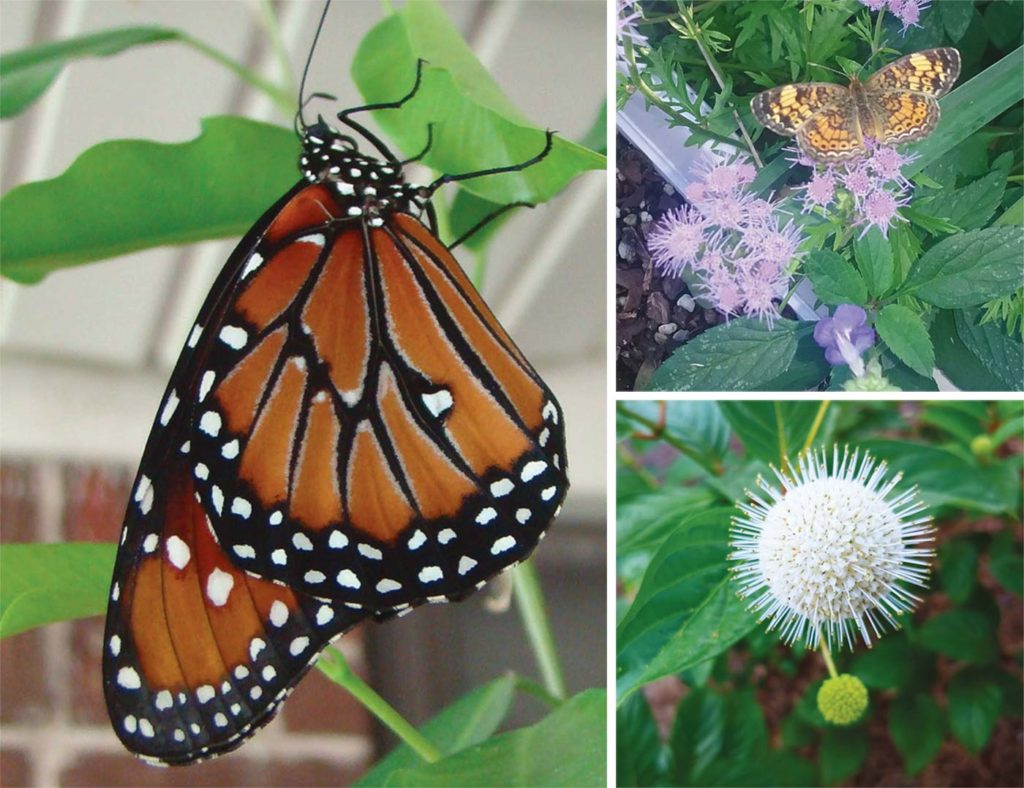
Delights and Revelations
In my garden, it often seems like there is more to do than the day leaves time for. That’s but one of the reasons I enlist the help of stalwart garden friends. Bees, birds, beetles, lizards, toads and butterflies are among the welcome visitors who help pick up the slack— and in return I do my best to be a gracious host. After all, many of these friends both live and work in the garden full time, allowing more time for me to enjoy resting outside and recharging my batteries with a frosty beverage on a warm summer day.
Among pollinators, one of the most enjoyable to watch at work are butterflies. More than 80 percent of the world’s flowering plants need a pollinator in order to reproduce. And because most of our food derives from flowering plants, they are crucial to ensuring many food crops remain productive. While broad-winged butterflies may not be as efficient as the workhorse bee, their flitting helps ensure that many of our seeds, fruits, vegetables and herbs reproduce. So it’s worth making a landing site for them in the hopes of persuading them to visit our gardens’ blooms.
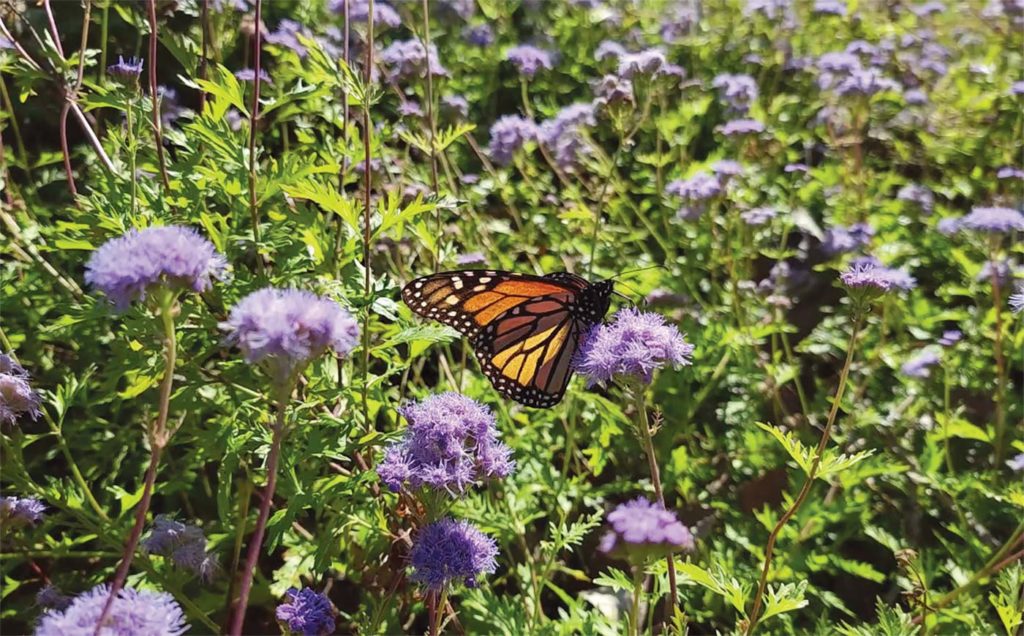
UNDERSTANDING BUTTERLIES: SUPPORTING THE POLLINATION DANCE
With excellent eyesight and a keen sense of smell, butterflies are most often lured by brightly colored, sweet-smelling flowers. As they land on these blooms and unfurl their long, tapered proboscis to take a sip of nectar, they inadvertently brush up against the stamen’s pollen. When they gracefully dance to another flower, some of that pollen shakes off and is deposited onto the new flower’s pistil, the female part of the flower—completing the pollination process.
In urban areas like North Texas, unfortunately, many butterfly populations are in serious decline. Where land was once abundant, with rolling fields of flowers, shrubs and trees (which provided both food and shelter), we now see rooftops, parking lots and roads. The fragmentation of the critical vegetation that does still exist often makes it more difficult for butterflies to find food and reproduce. It’s in everyone’s best interest to alleviate this for the sake of the pollinators, the people and the planet. The good news is that there’s plenty you can do to help. And in return, not only will you soak up the benefit of watching the butterflies that are attracted to your yard and garden, but you’ll also enjoy the beautiful blooms that lure them . . . and you might even glean more food production in the process.
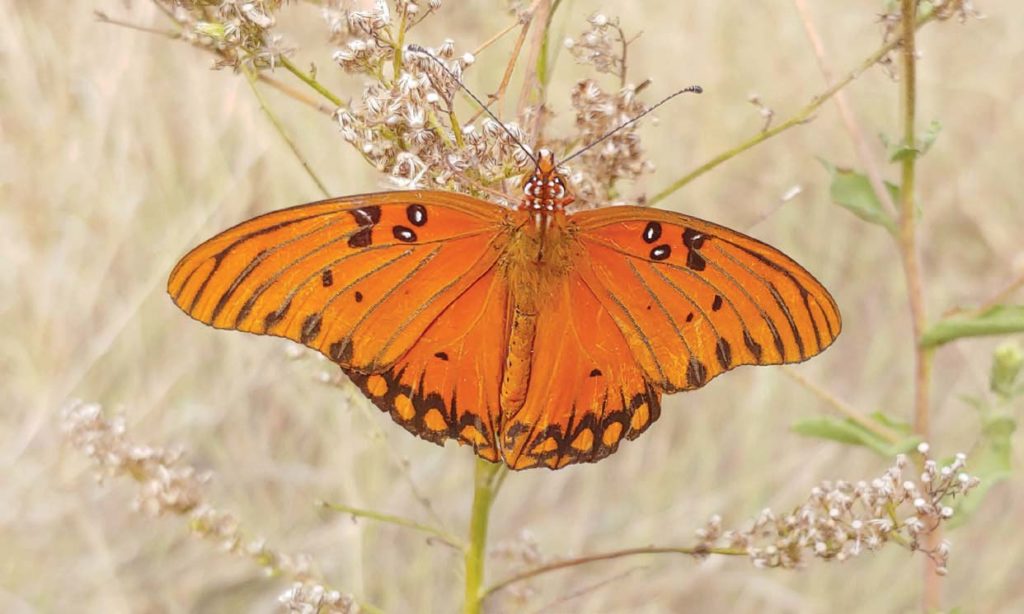
BRING ON THE BLOOMS (But Don’t Forget the Leaves!)
Attracting butterflies (or any other beneficial garden critter for that matter) can be achieved in three easy steps. We simply need to ensure that they have food, water, and shelter, the three components that form a habitat.
When butterfly gardening, there’s a delicate game of supply and demand at play that leads you to look beyond the canopy.
Most butterfly species in their adult stage will feed on a variety of flower species, but their offspring need more specific food sources in the larval stage. In fact, most caterpillars have very particular plant needs. We call these matched plants host species or larval plants. Certainly, the focus should be on planting the aforementioned brightly colored, sweet-smelling blooms that attract nectar-feeding male and female adult butterflies. But it is also critical to supply food sources for the young caterpillars to feed on. If you want to attract specific butterflies, your best bet is to plant an abundance of nectar-producing flowers as well as the host plant the species needs to munch on. Planting these is critical if you want to aid in encouraging butterfly conservation by offering a place to raise their young. Bonus: You’ll get to watch their whole life cycle and the metamorphosis from caterpillar to butterfly.
From observing the females lay eggs on your host plants to witnessing those eggs hatch into munching caterpillars to eventually viewing them as they form a chrysalis, the process is so much fun! But the real treat is when you catch a glimpse of the final transformation as these butterflies emerge and first master flight. It’s beautiful to think that you’ve been a small part of the process.
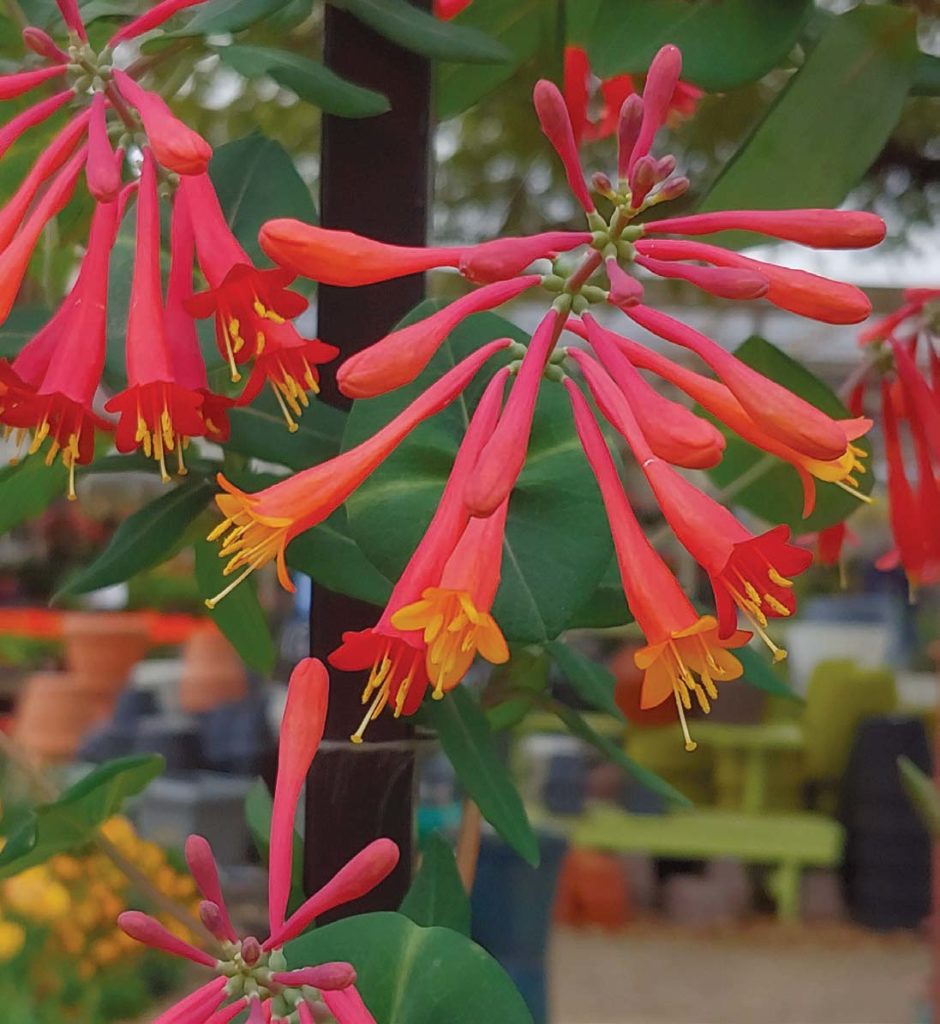
BUTTERFLY GARDEN ESSENTIALS: CREATING HABITAT
Food: (see suggested list below):
Larval/Host Plants for Caterpillars: Butterfly species rely on specific host plants for their larval young.
Nectar Plants: Provide food for many species’ adult butterflies. Water: Set out a shallow saucer or dish filled with wet rocks, gravel or mud, called a puddling station or wildlife waterer.
Shelter: Incorporate a mix of native and adapted grasses and shrubs. These are used to protect adult butterflies in inclement weather or for caterpillars to climb and form a chrysalis.
Sunlight: Not a must, but warm sunny areas with rocks or branches allow butterflies to soak up warmth and dry their wings.
BEST PLANTS FOR BUTTERFLIES
Texas butterfly species evolved alongside the plants that are indigenous to our region, so focus on plant species native to the Americas. This ensures caterpillars have the right food to thrive and sets you up for success when trying to entice their parents with blooms.
Special care should be taken to avoid spraying garden chemicals (both organic and synthetic) which could harm butterflies’ reproduction at any stage.
Nectar Plants: Gregg’s Mistflower, Purple Coneflower, Black-eyed Susan, Texas Lantana, Autumn Sage, Texas Sage, Coral Honeysuckle, Button Bush, White Mistflower, Fall Aster, Frostweed
Larval/Host Plants: Green Milkweed (for Monarch and Queen butterflies), Antelope Horns Milkweed, (for Monarch and Queen butterflies) Passion vines (for Gulf Fritillary), Pipevines (for Pipevine Swallowtail), Frog Fruit (for Common Buckeye), Flame Acanthus (for Texas Crescent), Mexican Plum (for Eastern Tiger Swallowtail)
BEST EDIBLE PLANTS FOR BUTTERFLIES (AND HUMANS)
Many herbs, vegetables, fruits and edible flowers also happen to provide nectar or serve as a host plant for butterflies.
Nectar Plants (when flowering): Garlic Chives, Mint, Lavender, Oregano, Sage, Catmint, Zinnias, Bee Balm
Larval/Host Plants: Dill, Fennel, Parsley, (for Black Swallowtail), Plums (for Eastern Tiger Swallowtail), Beans (for Gray Hairstreak), Citrus (for Eastern Tiger Swallowtail), Okra (for Gray Hairstreak), Sunflowers (for Bordered Patch), Jerusalem Artichoke (for Silvery Checkerspot)
Fun fact: Often, humanly edible host plants are closely related to a native plant species—so it’s easy for certain species of caterpillars to use them as food.
- To dig deeper into plants that attract butterflies, visit: dallasbutterflies.com www.wildflower.org
Daniel Cunningham, Horticulturist with Texas A&M AgriLife's Water University program. His primary focus is a holistic approach to landscaping and food production systems. Cunningham specializes in Texas native plants and trees, vegetable gardening, edible landscaping, rainwater harvesting and is passionate about utilizing landscapes as habitat for benecial wildlife. For more gardening advice om Daniel, tune in to NBC DFW (Channel 5) on Sunday mornings or ask @TxPlantGuy on Facebook, Twitter or Instagram.
- Daniel Cunninghamhttps://www.edibledfw.com/author/dcunningham/
- Daniel Cunninghamhttps://www.edibledfw.com/author/dcunningham/
- Daniel Cunninghamhttps://www.edibledfw.com/author/dcunningham/
- Daniel Cunninghamhttps://www.edibledfw.com/author/dcunningham/


